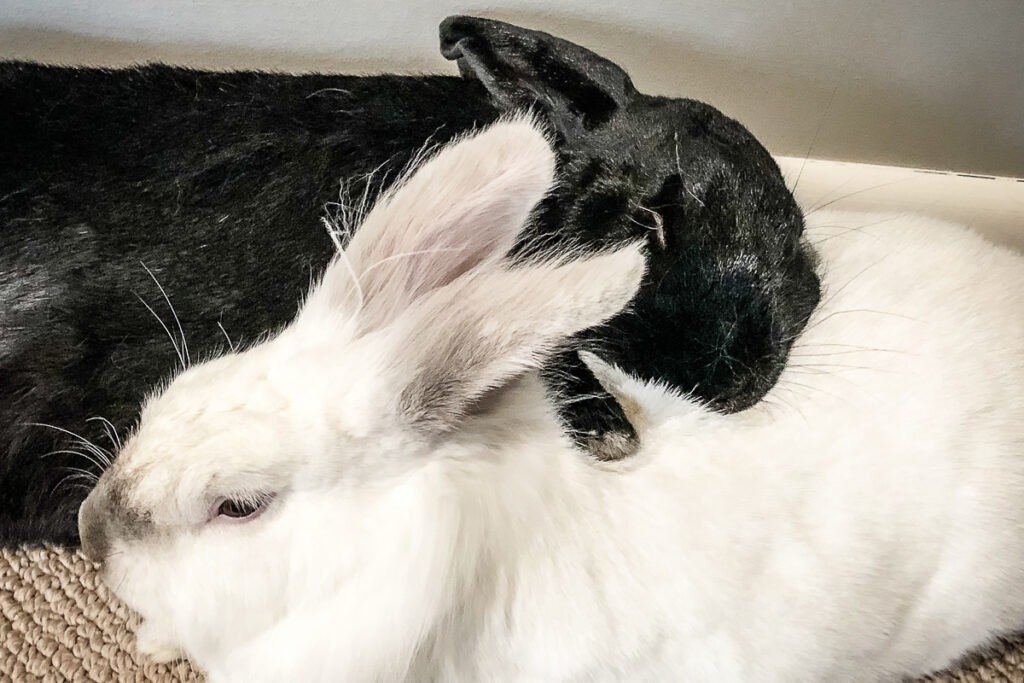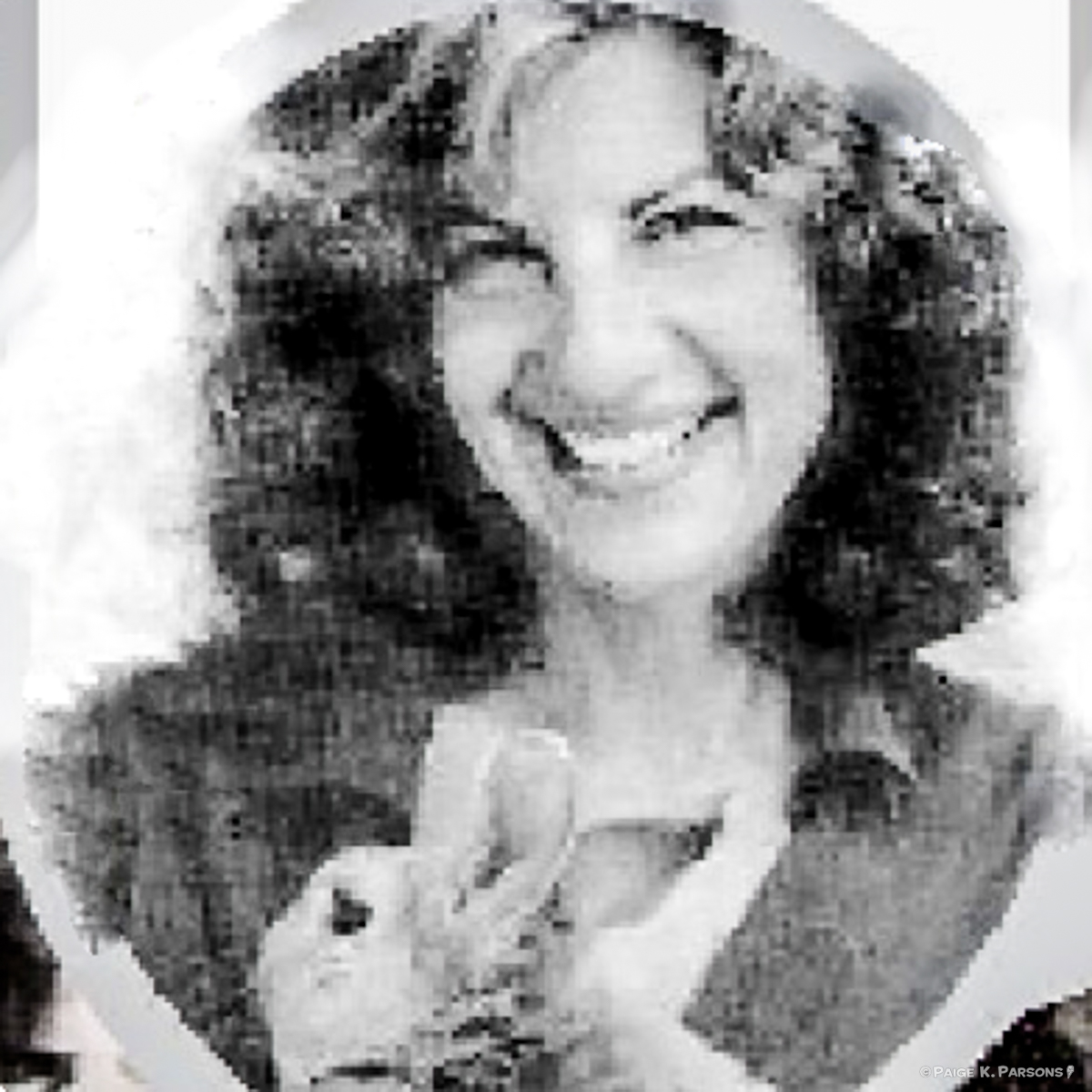As someone whose life is filled with fur-covered creatures, no one could mistake me for the non-petting type. This is not a treatise against petting, but a sketch of other places you can visit with your rabbit.
A Cruelty-Free Experiment
We rescued Chelsea, a feisty young lady with a gorgeous gray-brown coat and an unfortunate tendency to bite. We had recently changed our set-up from a foster home (where rabbits are cared for and then put up for adoption) to a sanctuary (where “unadoptable” animals come to live permanently with us). Chelsea had bitten two children and three members of the shelter staff, including the veterinarian tech who attempted the routine physical exam. As soon as she arrived in our quarantine area, Chelsea began pulling fur from her chest and lining her hiding box with it. False pregnancy, we told each other. Happens all the time-the stress of relocation, the presence of other rabbits. Four days later, she gave birth to five babies.
As fosterers, our standard procedure with baby bunnies was to spend lots of time with them, handling them frequently so they would feel comfortable around humans and thus improve their chance of being adopted. This time we were prepared to keep the whole family, and I wanted to find out what would happen if I didn’t force anything on them other than my quiet presence (and of course, any health-related handling such as nail-clipping or trips to the vet). Every day I spent at least an hour sitting or lying in the room with Chelsea and her offspring. I watched them as they took their first steps outside the nesting box. I was present at their first encounters with the chow bowl, the water bottle, the litterbox, and the gigantic furless creature whose eyes followed their every move. Because I’d been there since the day they were born, they viewed me as part of the furniture, as long as I didn’t move. When I brushed hair from my eyes, or turned a page of my book, they dashed for cover. I tried to remedy this by moving in slow-motion. If I moved too slowly, it was as if I were sneaking up on them. Anyone who has seen a cat on the prowl will recognize the danger of too-slow approach. The bolder ones came out of hiding more quickly than their shy siblings. As time passed I found I could move faster and faster without alarming them. I took this as a great compliment. The hours spent lying on the floor and seeing humans from a rabbit’s viewpoint had taught me that dashing for cover is a sensible response to the approach of lumbering giants.
As the weeks went by, my familiarity combined with their insatiable curiosity resulted in bunny excursions across my legs and onto my lap. My hair was a big hit, as were my shoes and shoelaces. By draping a towel across my raised knees, I created a hiding tent for them. Even Speckles, the least confident one, would climb all over me. One day, when he was about 8 months old, he took a cleaning break right in front of my face as I lay on the floor. I smelled his sweet breath. I observed at very close range his ear-grooming technique. This from a rabbit whom I had never touched other than to put him in a carrier when he went to the hospital to be neutered. If I hadn’t been investigating the to-pet-or-not-to-pet issue, this moment might never have happened, and I certainly would not have considered my relationship with Specks a close one.
Testing A New Hypothesis
In the early days of this social experiment, I delighted in being included in their day-to-day life. Gradually I came to enjoy and value the times when I was not an active part of their comings and goings, but simply a not-quite-invisible observer. From these “field studies” I learned that Laurel loves to spend the evening digging in the hay box. Clover and Daisy groom each other simultaneously, licking those hard-to-reach places behind the ears and between the shoulder blades. Jamie doesn’t do much of anything, at least nothing my poor blunt senses can perceive. He has three favorite places to be, and he can always be found at one or another, daydreaming, occasionally pointing an ear, radar-like, toward any activity that merits an ear’s-worth of attention. On these hot summer days, Speckles lies stretched full-length on the bare floor, his legs kicked back in what a friend describes as “Hollywood rabbit position.” I’ve noticed that grooming is contagious; when one begins, at least one other takes it up, even if they’re across the room from each other. Often a third will begin washing herself, as if saying, “Grooming! What a great idea! Mind if I join you?” Or perhaps it is for rabbits as yawning is for us. As participant or observer I find their lives endlessly interesting, amusing, endearing.
From the beginning I regularly attempted to pet each rabbit, curious to see whether they would at some point decide they did want to be touched. I found that Chelsea, like most reformed biters, loves to be petted, and resorts to biting only if gentler reminders to continue stroking her have been ignored. (Her reformation occurred largely as a natural consequence of being spayed.) Some of her offspring occasionally tolerated and even enjoyed brief petting, but none solicited it. It seems such a small thing–a gentle stroke of the hand on their lovely soft fur. But whenever I tried it, the result was almost always the same. The one I tried to touch would dash off, startling her brothers and sisters in the process. The air became charged with tension. Surely, I told myself, there is life beyond petting.
A Friendly Conclusion
It’s been a little over a year since these rabbits came into the world and our life. Although they don’t often want to be touched and never want to be held, they certainly seem to like being near me, much as they like to be near one another. It wasn’t till I’d given up my “petting agenda” that some of them began to present themselves for petting. They also like to sniff and nibble and climb on me. Laurel and Jamie sometimes groom my face or hands. I rarely touch them, but they pet me all the time. Laurel’s velvety fur brushes my face as she hops by on her way to bully her gentle sister Clover. Jamie sits on my lap and plays king of the mountain. Daisy stretches out against me, grinding her teeth and visiting REM dreamland. I treasure these gestures of trust and acceptance, because they are freely given, from one friend to another.

